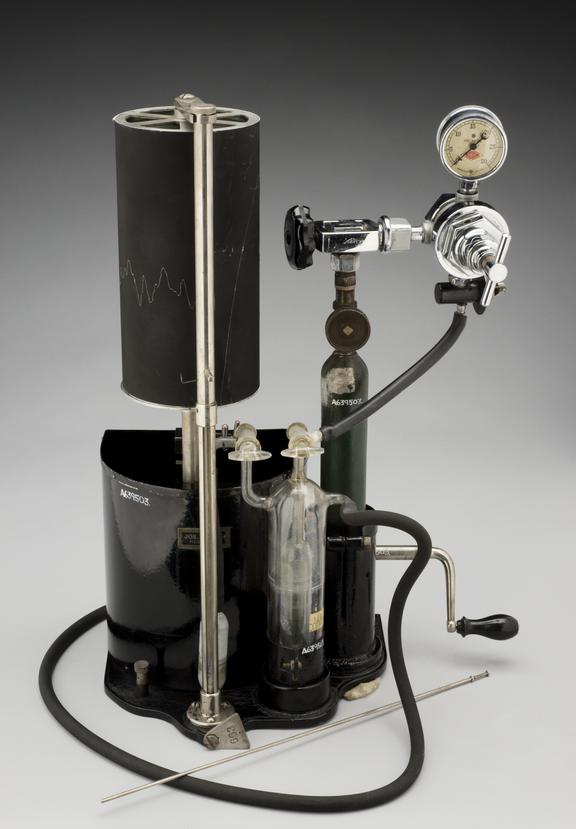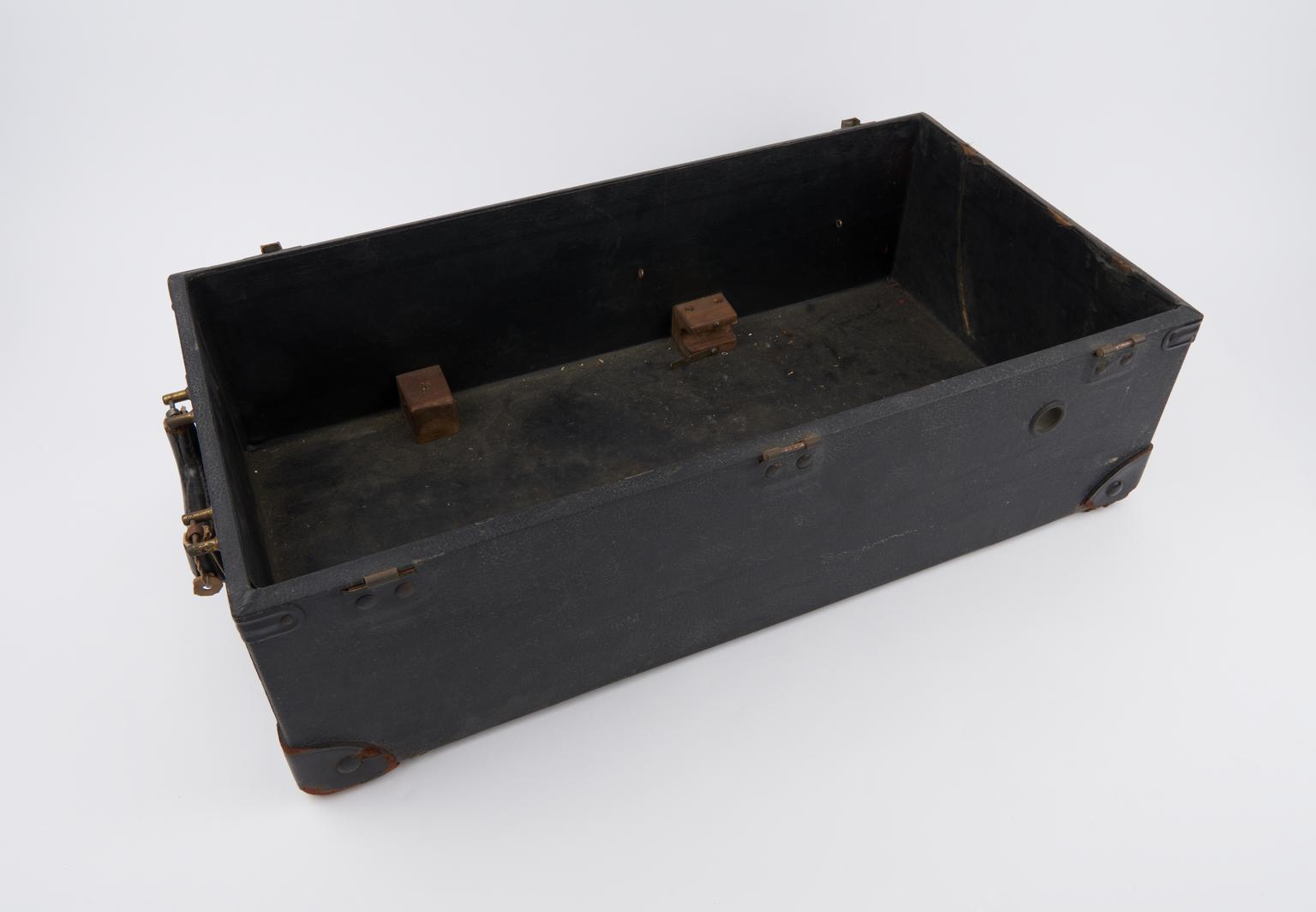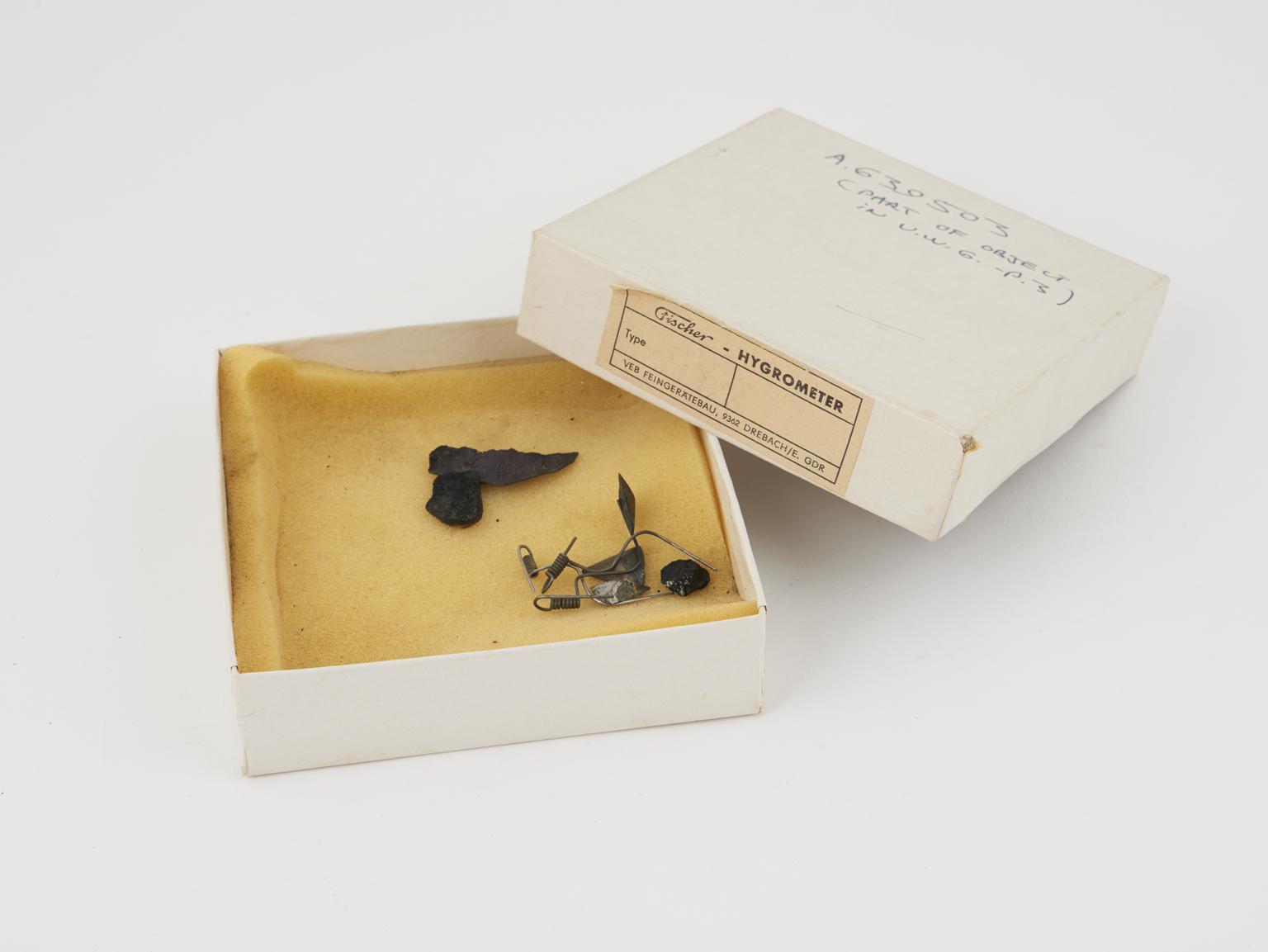Priced advertisement for utero-tubal insufflation apparatus
Priced advertisement for utero-tubal insufflation apparatus, published by Becker, New York City, 1928

Utero-tubal insufflation apparatus, in case, metal, with instructions, advertisement and tin for typewriter ribbon, invented by Rubin, made by Becker, from Italian Hospital in London, American make, 1928
Potential blockage in the Fallopian tubes was assessed using this apparatus. It was developed by American gynaecologist Isidor Clinton Rubin (1883-1958). It blows carbon dioxide, via a cannula, into the uterus. The ease with which gas escaped through the Fallopian tubes was reflected by pressure changes on an instrument called a manometer. Blockage of the tubes is often due to previous infection or surgery. It is a common cause of infertility.
Rubin’s test formed a standard part of infertility investigations for many years. It was gradually replaced by an X-ray technique involving radio-opaque ‘dye’ injected into the uterus. The apparatus was made by American maker Joseph Becker and the Ohio Chemical and Manufacturing Company. It was used at the Italian Hospital in London.
Priced advertisement for utero-tubal insufflation apparatus, published by Becker, New York City, 1928
Instructions for use of utero-tubal apparatus, printed in USA, 1928

Utero-tubal insufflation apparatus, without some items (see other parts for rest), made by Becker, from Italian Hospital in London, American make, 1928

Case for utero-tubal insufflation apparatus, without contents (see other parts for rest), made by Becker, from Italian Hospital in London, American make, 1928

Cardboard box containing loose metal parts of utero-tubal insufflation apparatus, invented by Rubin, made by Becker, from Italian Hospital in London, American make, 1928